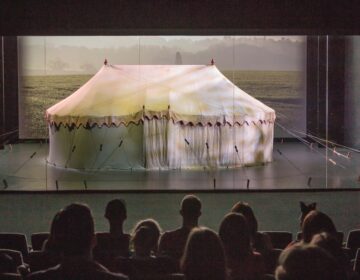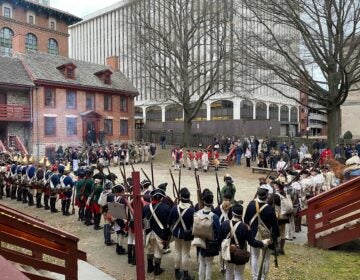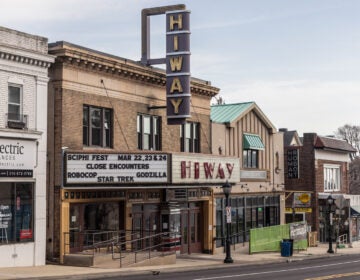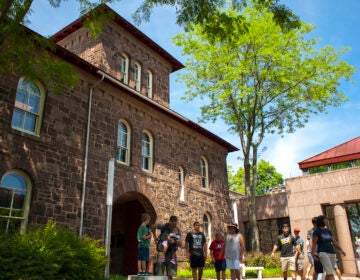From Philly and the Pa. suburbs to South Jersey and Delaware, what would you like WHYY News to cover? Let us know!
On Dec. 15, 1776, just after a crushing defeat at Fort Washington in New York when George Washington’s revolutionary army was at its lowest, the general noticed Bucks County was riddled with British loyalists.
While preparing his daring and iconic maneuver to cross the Delaware River, Washington wrote to the Pennsylvania Council of Safety to express his concerns about gaps in public support. If folks were not proactively working to defeat the British, Washington proposed, the government should take away their guns.
“If they will not use them for us, there is the greatest reason to apprehend they will against us,” Washington wrote. “Even supposing they claim the right of remaining neutral, in my opinion we ought not to hesitate a moment in taking their arms.”
Colonists not sufficiently enthusiastic about the revolutionary effort could be fined, their property seized and jailed. That infuriated many in Bucks County, including the infamous Doan family, who turned into a band of outlaws staging a string of terrorizing robberies that attempted to undermine the war for independence.
Ultimately members of the Doan Gang were captured after a dramatic shootout in an isolated cabin. Later, some were executed without trial.
Was the Doan Gang a group of villains or heroes? That’s what the Mercer Museum in Doylestown, Pa., is asking in “The Doan Gang: Outlaws of the Revolution,” on view through the end of 2026.
It is no coincidence this exhibition will be on view during the semiquincentennial, when the United States celebrates its 250th anniversary.
“History is typically told by the winners. The revolutionaries are the winners. That means we have lost out on the other side of that story, what other people were experiencing at this time,” said co-curator Annie Halliday, the museum’s library and archive director.
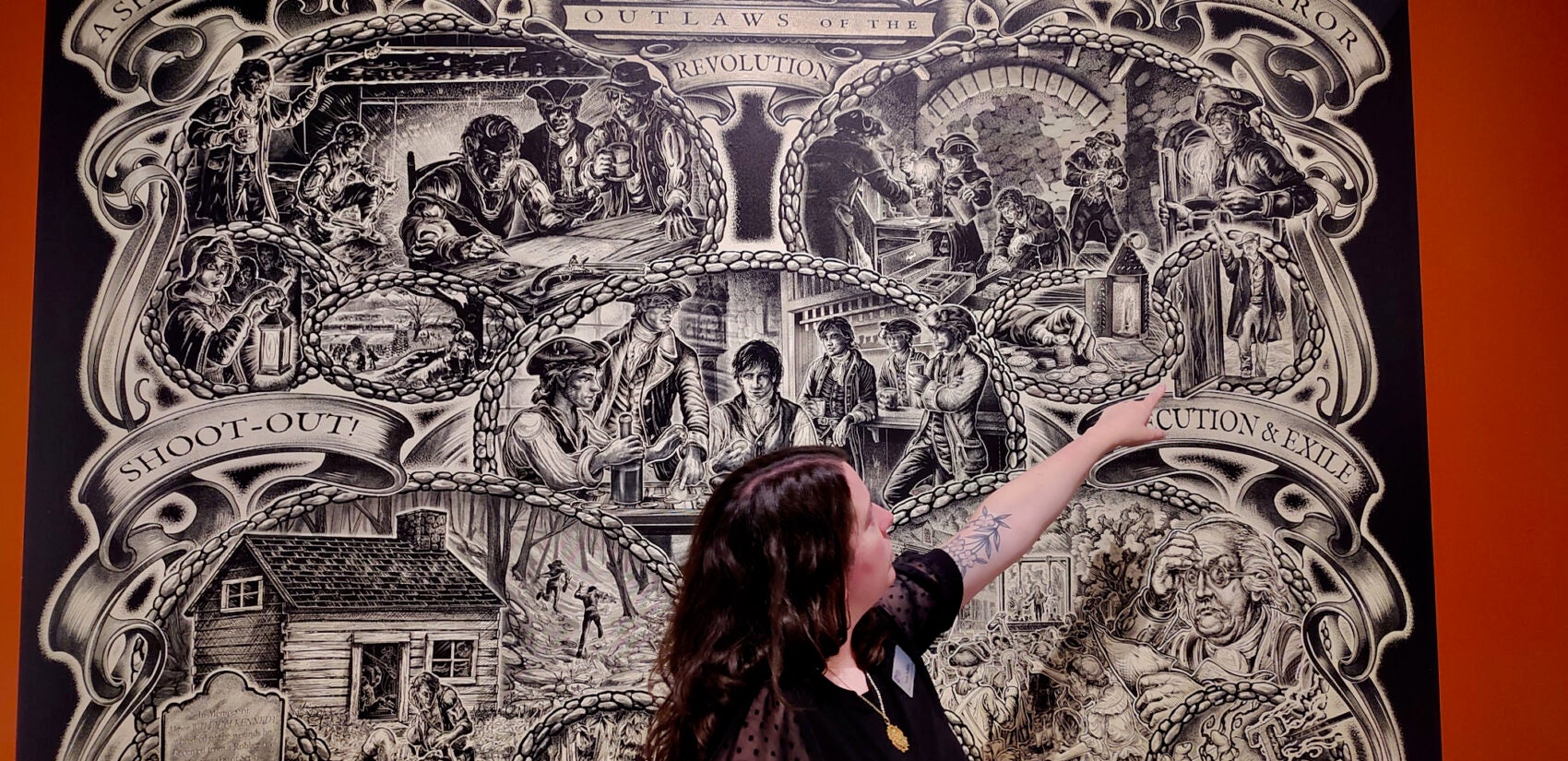
“We’re going to be very reflective of our national identity in 2026, and here we are telling a story about denying someone their due process and executing them for a non-violent crime,” she said, “at a time we were in early democracy. What does that say about us?”
As colonists started buzzing about independence and the Founding Fathers began discussing priorities for a new nation, the public was divided into three groups: patriots to the revolutionary cause, loyalists to the British crown and the “disaffected” who wanted no part of the conflict. Bucks County was particularly divisive.
Due to penalties imposed on colonists who did not support the revolution, many disaffected moved into the Loyalist column. By the time the Doan family became disillusioned with the movement toward independence in the late 1770s, there was already a fertile network of Loyalists in Bucks County ready to welcome them.
The Mercer re-created a barn owned by Joseph Tomlinson in what is now Upper Makefield Township, where Loyalists would gather to plan actions. In that museum tableau is an original diagram of an encampment of Washington’s army, drawn in 1780 by a spy likely in Tomlinson’s family, meant to be delivered to British forces.
The Tomlinsons and the Doans staged home invasion robberies targeting tax collectors and treasury offices. The exhibition re-creates the home office of John Hart, the Bucks County treasurer, which was ransacked by the Doan Gang. The stolen money would be used to assist in the escape of British prisoners of war.
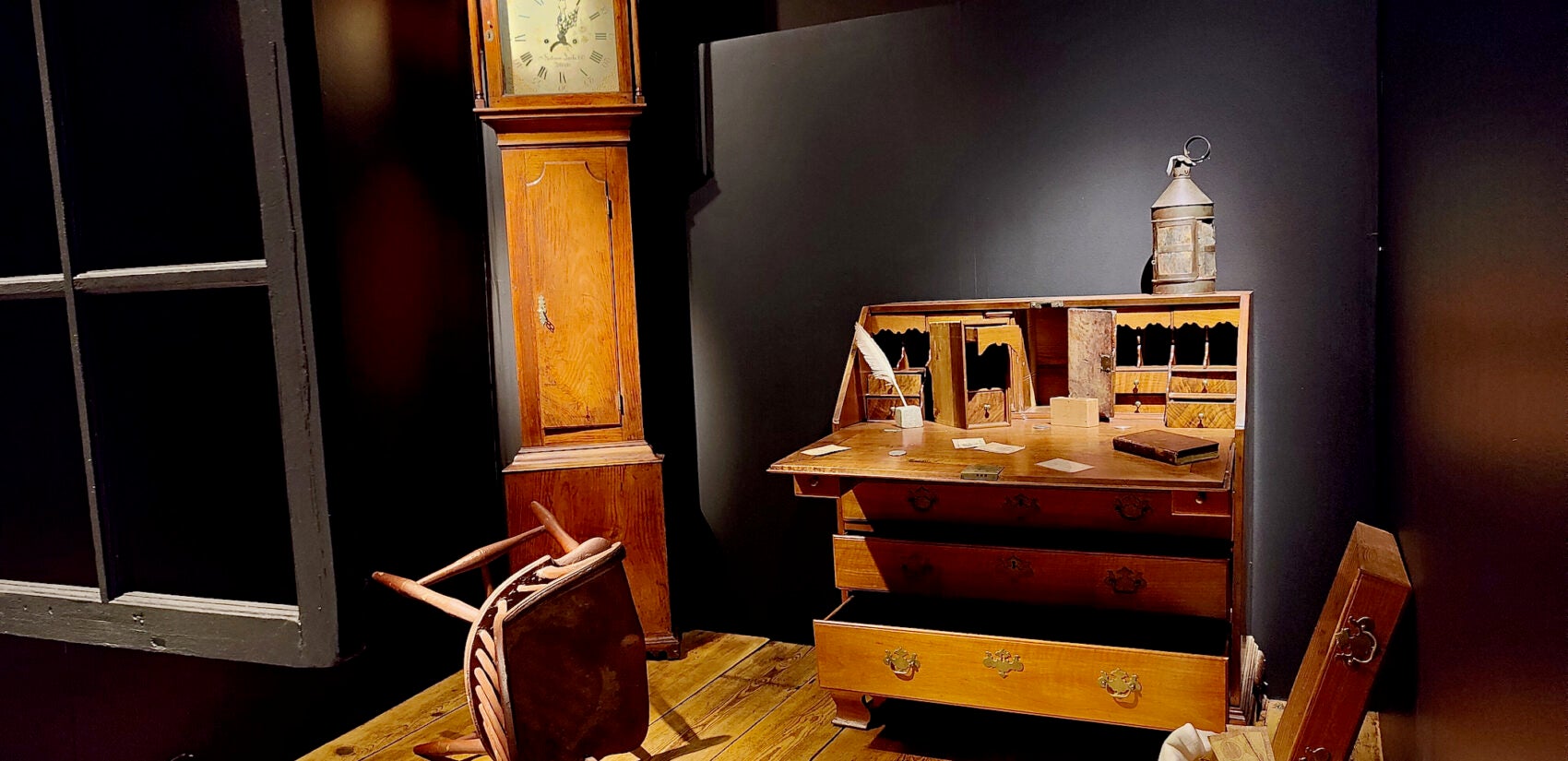
Also on view is a hand-drawn document by a British soldier named Roger Lamb, explaining how Pennsylvania Loyalists helped him escape from a POW camp. The document, covering three pages of tightly written text, features his escape story cluttered with drawings and religious proclamations. It reads like a cross between a graphic novel and a bottle of Dr. Bronner’s castile soap.
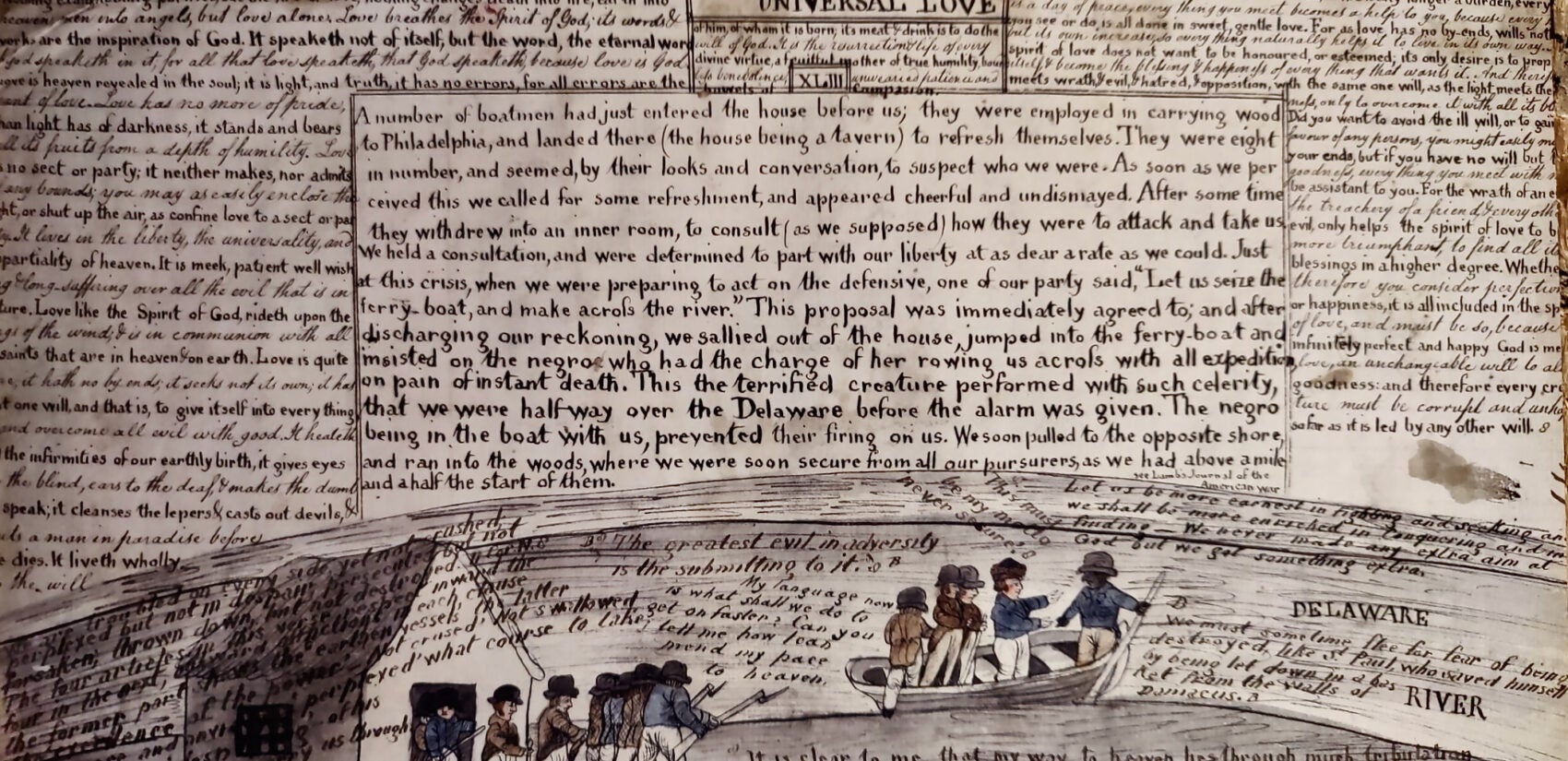
The Doan Gang expressed a certain honor among thieves by stealing public money, i.e. collected taxes meant for the patriot government and not personal property. However that moral code was often breached: The Doans were known to steal horses, weapons, clothes, watches, shoes and, in one bizarre case, a formal black taffeta dress.
The gang hid in caves throughout Bucks County and moved by night through forests. The exhibition tableaus ring around the museum space with a dead zone in the middle. The forest, as it is called, is dressed up with dark theatrical lighting and tree branches where visitors can veer off the main exhibition route and steal away into other sections.
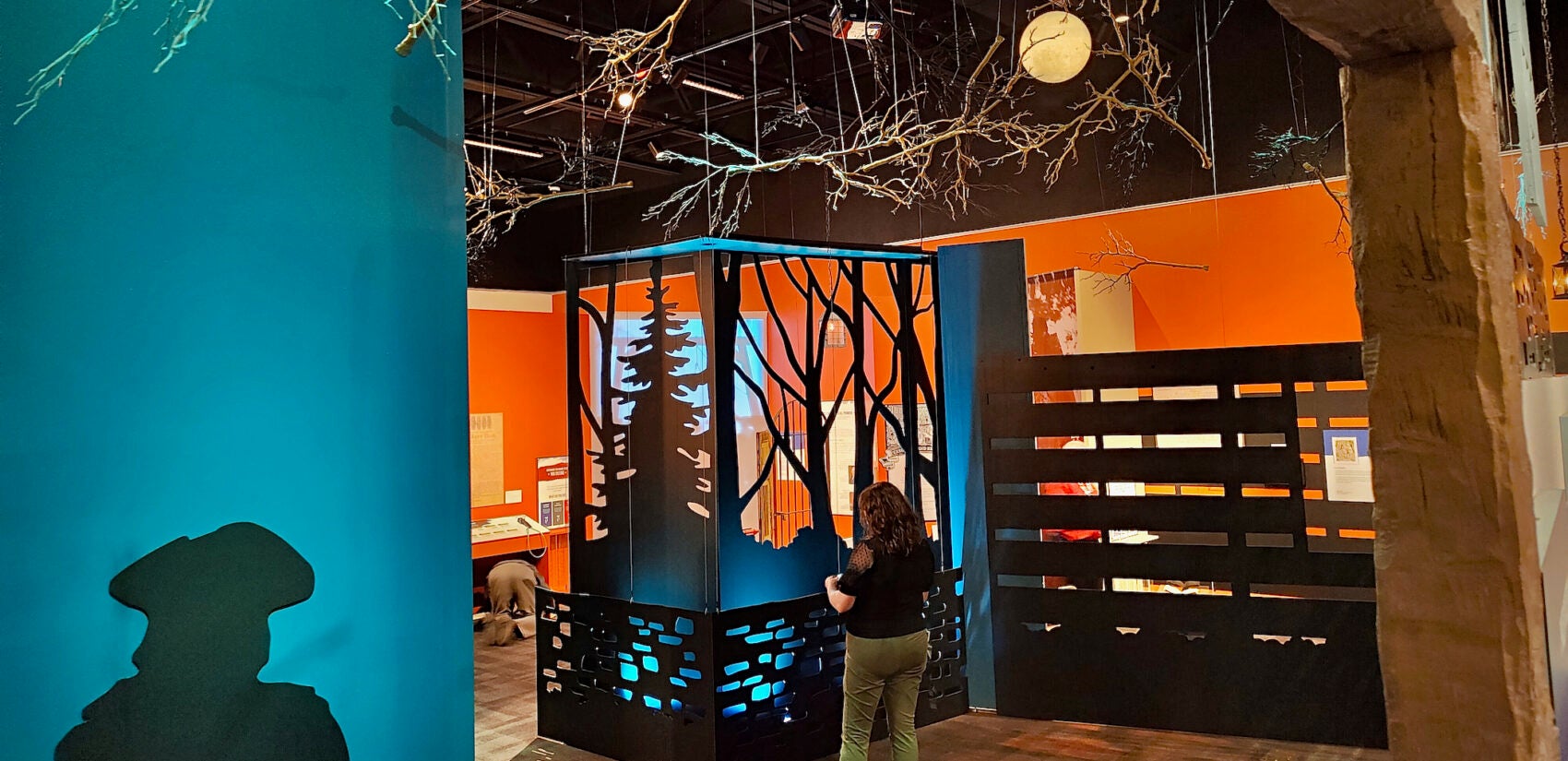
The story of the Doan Gang has made for page-turning adventure stories for more than two centuries. The initial newspaper reporting at the time became fodder for romance novels, magazine stories and ballads that re-told the outlaw tale in increasingly sensationalized ways, veering further and further from the truth.
“People who live here and grew up here and were told the story — they are so interested and passionate about this story,” Halliday said. “First and foremost, we wanted to finally give what everyone’s been asking for in the community: a factually accurate story of the Doan Gang.”
Halliday and her colleagues have done original research for this exhibition and its accompanying book to root the Doan Gang in fact. Members of the gang went far beyond just the family. Halliday said her team uncovered more than 60 names associated with the group, many of whom ultimately fled to Canada.
The Doan Gang never murdered anyone in their robberies, said Halliday. The last stand of the gang in the dilapidated Halsey cabin in 1783, where members exchanged gunfire with a posse led by Col. William Hart, resulted in two deaths: Hart’s men shot Moses Doan dead after he had surrendered, and an errant bullet from the Doan Gang shattered the wooden stock of a rifle, lodging splinters in the groin of Major William Kennedy, who would later die from his wounds.
The exhibition features the only firearm known to be associated with the Doan Gang, a flintlock rifle recovered from the cabin.
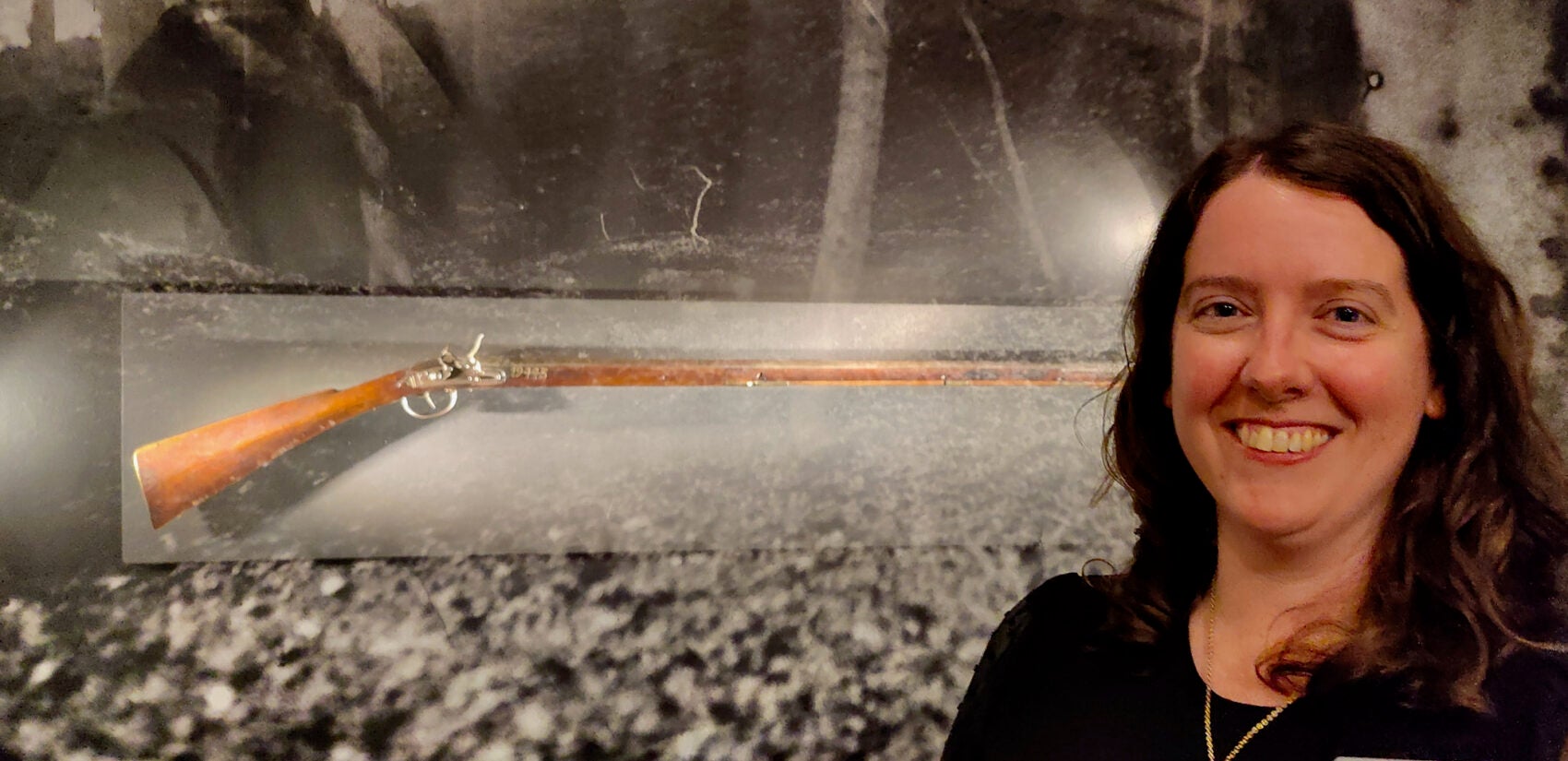
After the shootout, members of the Doan Gang were rounded up and accused of outlawry, an archaic and vague crime without a precise definition.
“What happens if you’re considered to be an outlaw is you’re existing outside of the law,” Halliday explained. “One of the worst parts of being tainted with outlawry is you forgo your right to a trial. It is an automatic sentence of death.”
The first convicted members of the Doan Gang avoided death, likely due to fortuitous timing. Aaron Doan would have been executed in 1787, which would have coincided with the Constitutional Convention in Philadelphia. Likely to avoid bad optics in his hometown, Benjamin Franklin, then serving as president of the Pennsylvania Supreme Executive Council, pardoned the prisoner.
Abraham and Levy Doan were not so lucky. In 1789, Franklin approved their death by hanging, which became a political hot button. Some officials disagreed with an execution done without trial. John Dickenson, Franklin’s predecessor as president of the Council, said the hangings should not go forward until “the doubts and difficulties that present themselves to our view, are removed.”
In 1888, Henry Mercer, creator of Fonthill Castle in Doylestown and a founding member of the Bucks County Historical Society, had a large memorial tombstone made for what was believed to be Moses Doan’s grave.
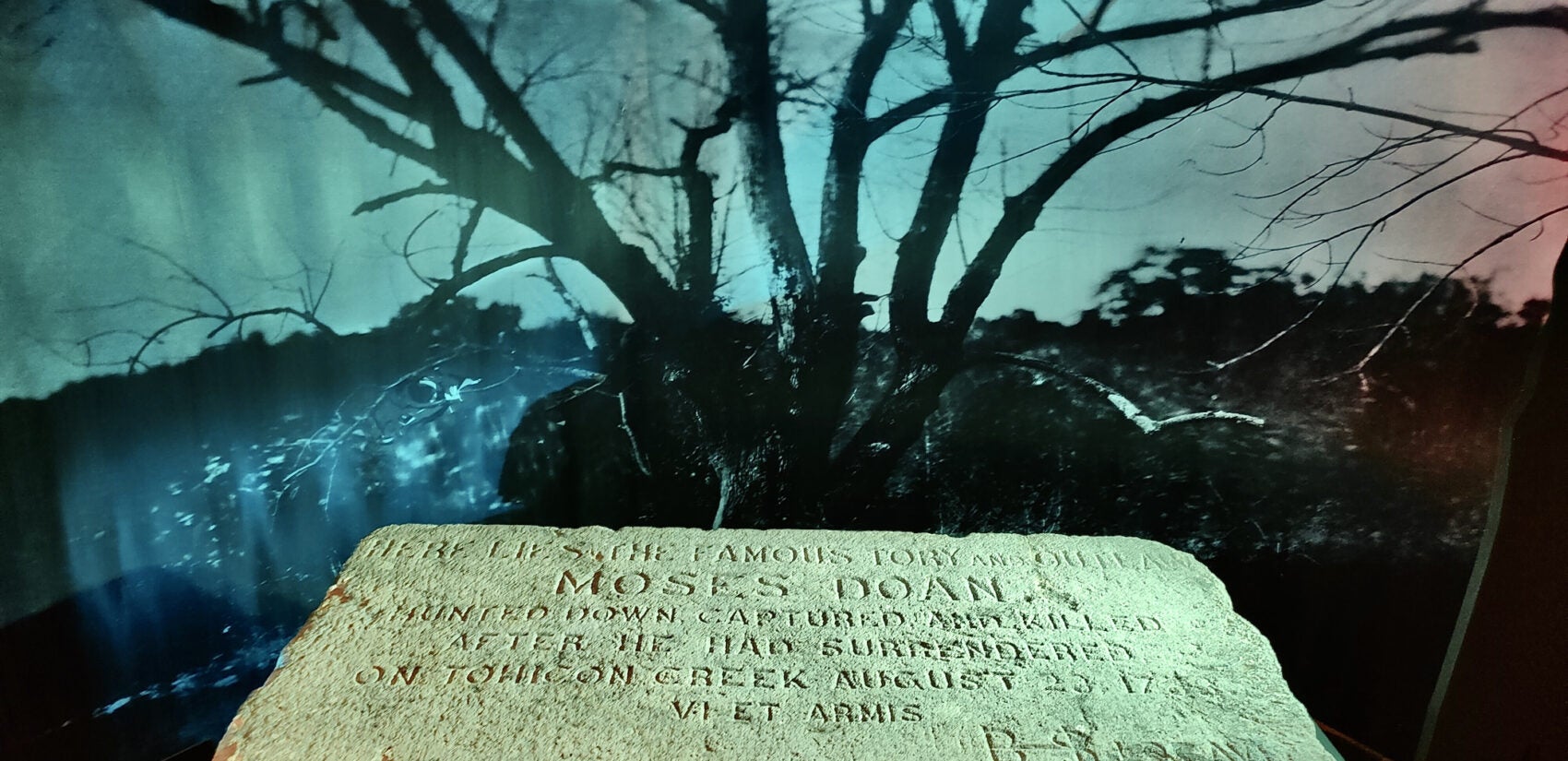
Even a century after the events of the Doan Gang, the tombstone elicited strong criticism. “It does not seem right to heroize the biggest traitor of Revolutionary times,” wrote a correspondent in the Bucks County Intelligencer in 1888. That carved memorial now greets visitors at the exhibition entrance.
“I actually look at the Revolutionary War as a civil war,” said John William Doan, a contemporary descendent of the Doan family featured in a video for the exhibition. “There were different attitudes about where they wanted the country to go, so people died. Plain and simple.”
Halliday says the hard questions the Doan Gang raise about the founding of America will be part of the 250th celebrations.
“It’s really easy to forget that it was not certain the revolutionaries were going to win, and not everyone was automatically a revolutionary,” she said. “These people are foisting this new government on them, but they decided to remain loyal to the British crown.”

Saturdays just got more interesting.
WHYY is your source for fact-based, in-depth journalism and information. As a nonprofit organization, we rely on financial support from readers like you. Please give today.



